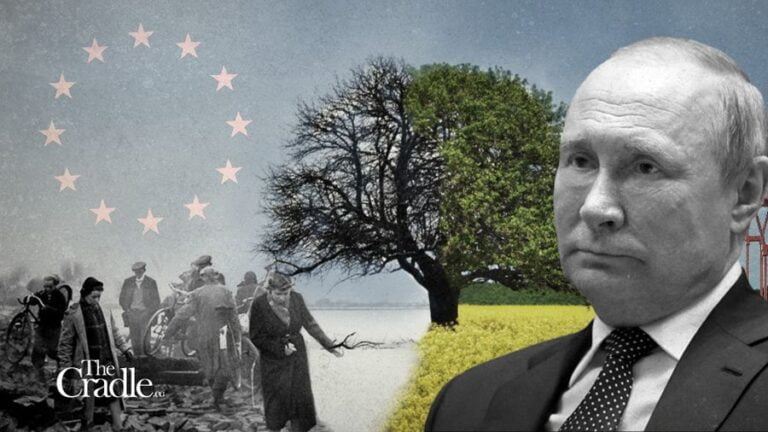How the ‘Center’ is Spinning Apart
That “icon” of the “centrists,” Facebook, recently wrote to a site on the U.S. “Alt-Right” telling them that various posts which they had authored must be immediately taken down, or would be deleted. The references which had offended were the words ‘trannies” for transgenders and “cross-dressers.” The message from Facebook further suggested that gender “identity” is considered a “protected characteristic” (under the law – which it is not), and that reference to transgenders as “trannies” could be considered “hate speech” (i.e. a legal offence).
A totally trivial issue, in itself, except that it goes to the heart of the disputed vision which encapsulates the present U.S. civil stand-off: On the one side, the notion that diversity, freely elected sexual orientation, and identity rights, equals societal cohesion and strength. Or, on the other hand, the vision encapsulated by Pat Buchanan: that a nation (including its new-comers) are bound more by the possession of a legacy of memories, a heritage of manners, customs and culture, and an attachment to a certain “way-of-being,” and principles of government. And it is this that constitutes the source of a nation’s strength.
The point here, is that the “centrist” center visibly is folding. The insistence to manage and control discourse (per Michel Foucault), around a strictly de-limited, political ideology is drawing now public disdain (and street demonstrations in the U.S.) targeted both at social media, and at elements of the MSM (mainstream media outlets, such as CNN). That is to say, the more the centrist diversity meme is pushed in the U.S., the greater the popular push-back, it seems.
The sites opposing such “correctness” are attracting a much higher audience than those espousing it. But that is not the whole story. It is not even the half of it: “the center” is giving way on multiple fronts (with huge, and likely turbulent consequence).
Foreign Policy Chaos
Most evidently, this is occurring in foreign policy generally, and in the Middle East more particularly. It has been only lightly reported in the MSM, but the U.S. National Security Council again has failed – according to reports – to offer any compelling arguments as to how America might, in any way, succeed in Afghanistan even with a hefty increase in military forces, (as advocated by NSC Advisor H.R. McMaster). It has been a long-haul war – and there will be no pleasing outcome to this war for anyone; rather the opposite – but that has been long evident to almost all who followed events there.
Secondly, Hizballah has routed – in just four days – Al Qaeda from the Arsal enclave in north Lebanon. Once again, Lebanon is contiguous with Syria, just as Iraq is now contiguous, adjoining and open to Syria. Aided by the psychological shock to insurgents of the news of the halting of CIA of weapons and salaries supplied to (some, not all) insurgent groups, the Syrian army and its partner forces are quite rapidly taking back the Syrian state. The U.S. has decided, it seems, that there are no good options for America in Syria, either. And that, when Raqa’a falls and ISIS is defeated, the White House may well conclude that U.S. objectives there will have been met.
Thirdly, the Iraqi people have been passing through a significant metamorphosis. Mobilized and radicalized by ISIS’s physical brutality and ideological totalitarianism in northern Iraq, this is a nation in motion: The political landscape, henceforth, will change too. The Shi’a of Iraq are sensing their empowerment.
The (unpopular) government, and the (respected, but now elderly) Hauza (religious leadership) – necessarily – are having to swim with this new tide of popular mobilization and self-assertion. These profound shifts in mood already are finding their reflection in Iraq’s strategic positioning in that Iraq is moving closer to Russia (i.e. the purchase of Russian T20 tanks), and to Syria and Iran. The “spine” of the Middle East is consolidating in a new way.
This mood-change may well shape, too, the future of Sunni Islam: Most ordinary Iraqi Sunnis have been repelled, and disgusted, by the excesses of Wahhabist Da’esh, (as have Syrians of all sects). Sunni citizens of Mosul – now free to relate their experiences – have been telling their Iraqi compatriots (I have been told) of their lingering anger at the ISIS’s beheadings of the local Sunni clergy for complaining about the un-Islamic actions of foreign jihadists in the ranks of Da’esh in Mosul. This adverse experience of Nejd Islam will have repercussions, ultimately, on Saudi Arabia and its leadership, (now heartily disliked in Iraq) – and America, Saudi Arabia’s close ally.
In short – for Europe and America – the “center” of its Middle East policy is folding (while its Gulf Cooperation Council-led bulwark is in crisis). Across the West, cries of distressed Syria “hawks” are in the air.
There will, of course, be repercussions: Israel will threaten that “it cannot stand idly-by” with Hizbullah and Iran situated on the Golan armistice line, and may try to test Russia’s resolve as guarantor of the southwest Syrian de-escalation zone. Prime Minister Benhamin Netanyahu is particularly angry that Israel has been outmaneuvered in Syria (by Russian President Putin), that the hope to create an Israeli-controlled cordon sanitaire inside southwest Syria has been frustrated. And Israel and its allies now will push the U.S. hard for a punitive containment vice to be imposed on Iran in retribution.
The new Saudi Regent (Crown Prince Mohammad bin Salma or MbS) represents another unpredictable and volatile element in this mix. Despite this, the Pentagon is well aware that much of Israel’s bluster concerning Iran, is just that: bluff. Israel, Saudi Arabia and UAE have no capacity to take on Iran, beyond a day – without America’s full backing.
Wobbly Economic Center
The other part of “the center,” which is looking increasingly wobbly, is that of economic policy. A consensus seems to be hardening among some market leaders that asset values cannot simply go on levitating upwards – carried up on a sea of liquidity, and near zero interest rates – entailing near zero volatility and one-sided trades that have the market listing like some capsizing, overloaded boat after all the passengers have rushed to one side of the craft.
Some market participants however, seem to believe that the Central Bankers will never have “the spine” either to hike rates, or to shrink their balance sheets, and thus face a market “tantrum.” These participants – until recently, perhaps a majority – believe that the new normal “boat” of low inflation and low rates – will continue to be floated off, practically indefinitely, albeit with the help of a further $20 trillion to $50 trillion of “qualitative easing” or QE.
This argument is far from new, but recently a substantial number of major financial leaders (and some Central Bankers) have been sounding grave warnings about the high multiple valuations of financial assets, about pockets of sub-prime debt re-emerging (automobile loans), and debt-to-GDP levels (personal and public) soaring above 2008 crisis values.
Global debt is up $68 trillion or 46 percent, since the eve of the 2008 financial crisis, and now stands at 327 percent of global output. A critical mass of senior financial opinion seems now to be turning. They put this troubling monetary and market distortion against the prospect of a U.S. debt ceiling likely to guillotine U.S. Federal Government spending quite imminently, and against the probability that deeply conflicted Congress – with polarization in both main parties – being able neither to pass a budget; nor produce the Trump “reflation”; nor even launch a significant infrastructure re-build.
Their fear is that there is a substantial tranche of congressmen and senators in both parties that are so hostile to Trump that they would be happy to see him fall flat on his face – even at the cost of economic crisis. Or, they worry that even if some stimulus is passed, that the Central Banks will remove the liquidity punchbowl from markets too fast. Either way, they see grave risks running through to the end of this year, and into 2018.
In short, not just foreign policy but financial policy, too, may find itself hostage to the dissolved center of U.S. politics – with all which that implies, i.e., the lack of the functioning, largely centralized, mainly cohesive unit, that used to be the American government as it has been known since World War Two.
Inviting Push-back
And here we return to our initial, rather trivial anecdote about Facebook trying to re-establish the centrist meme of gender choice being an undiscussable “protected category.” The point is that the center is not holding: the more it tries, the more it invites, and gets, willful push-back.
Equally, as the hawks clamor to restore the former centrist foreign policy meme that arming, training and paying Wahhabi jihadists to slaughter 100,000 Syrian soldiers (many, if not most of whom, were Sunni) represents an American interest is no longer holding. See, for example, David Stockman’s Bravo! Trump, For The Tweet That Is Shaking The War Party (Trump: “The Amazon Washington Post fabricated the facts on my ending massive, dangerous, and wasteful payments to Syrian rebels fighting Assad…..”).
And the meme that too much debt should be solved by adding even more debt – and that the consequent soaring asset inflation should welcomed as mere confirmation that economic recovery is unfolding, as it should – is no longer holding also. This whole approach is now in in sharp contention.
Even the Central Bankers now worry about asset inflation (that they themselves have nurtured) but they worry even more about the consequences of any attempt to roll it back. They lie between a rock and a hard place.
Where will this take us? Possibly, the psychological turmoil of the reverses in U.S. foreign policy will continue to roil throughout the summer; but come autumn, there may be less U.S. appetite (or attention available) for foreign policy initiatives as the economic “winter” approaches. Or, at worst, the sheer overwhelming conflict on the domestic front could invite the notion that a foreign initiative would prove a welcome distraction from economic woes.
Iran and North Korea are the current U.S. rhetorical punch bags, but neither should ever be contemplated as candidates for some “distraction.” Rather they represent potential nemeses.
As for the economic woes – not so much QE 4 – but direct, deficit funding helicopter money beckons, perhaps. Which is to say that freshly minted new, “empty” money would be used to directly fund Federal expenditure. (Trump in business, has never shied away from debt).
Often it is said that there is no precedent to our present extraordinary monetary circumstances, but the history of the Assignat in France of the early 1790s, offers some hints. Despite massive money creation, Andrew White, in his book Fiat Money Inflation in France (published in 1896) notes that “[t]hough paper money had increased in amount, prosperity had steadily diminished. In spite of all the paper issues, commercial activity grew more and more spasmodic. Enterprise was chilled and business became more and more stagnant”.
Finally, just to be clear, Donald Trump undoubtedly is facilitating the dissolution of the Establishment’s “center” – but that, after all, was his declared aim. But he is not responsible for it. This potential was already latent: he simply saw it – and adroitly, climbed aboard.
By Alastair Crooke
Source: Consortium News







